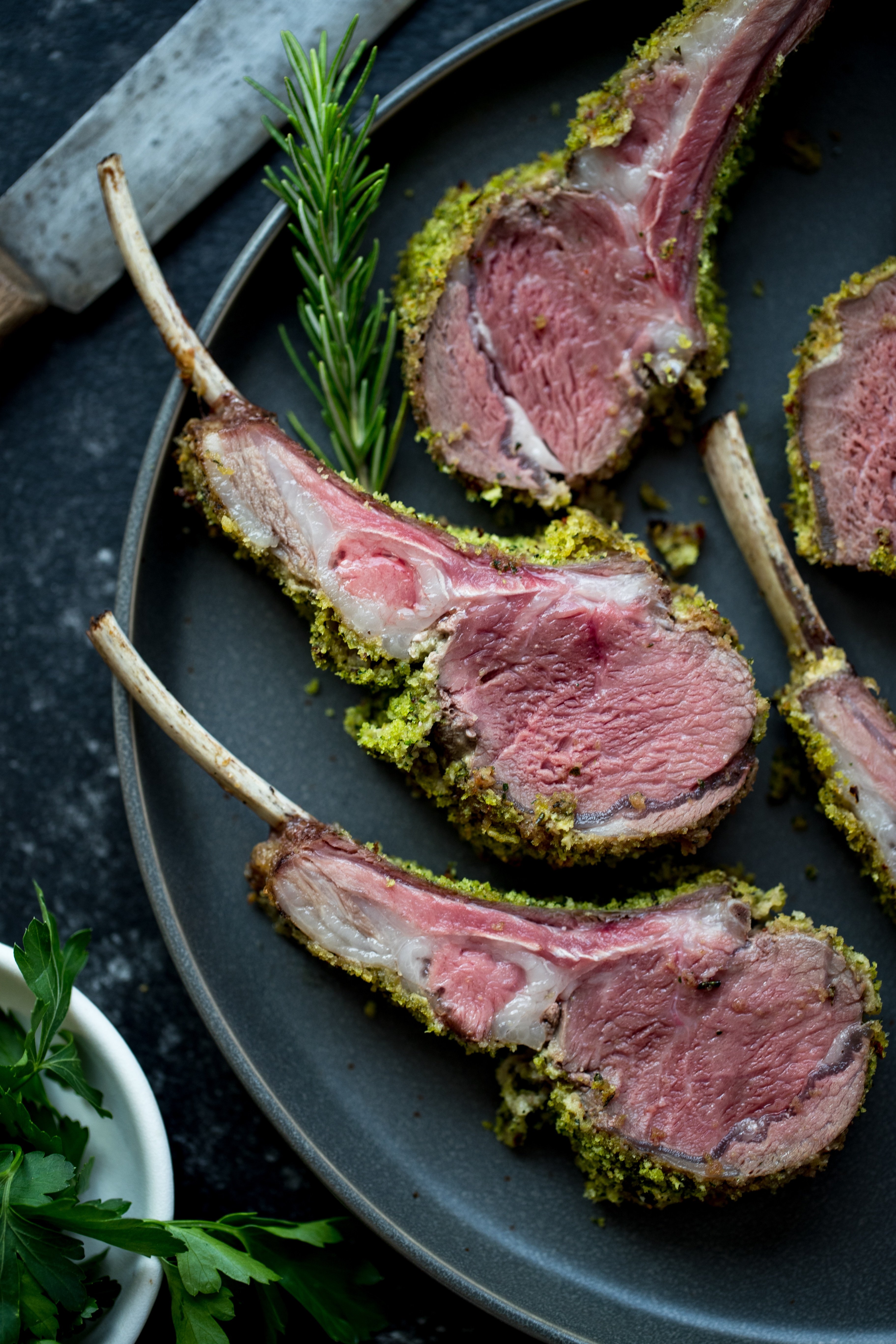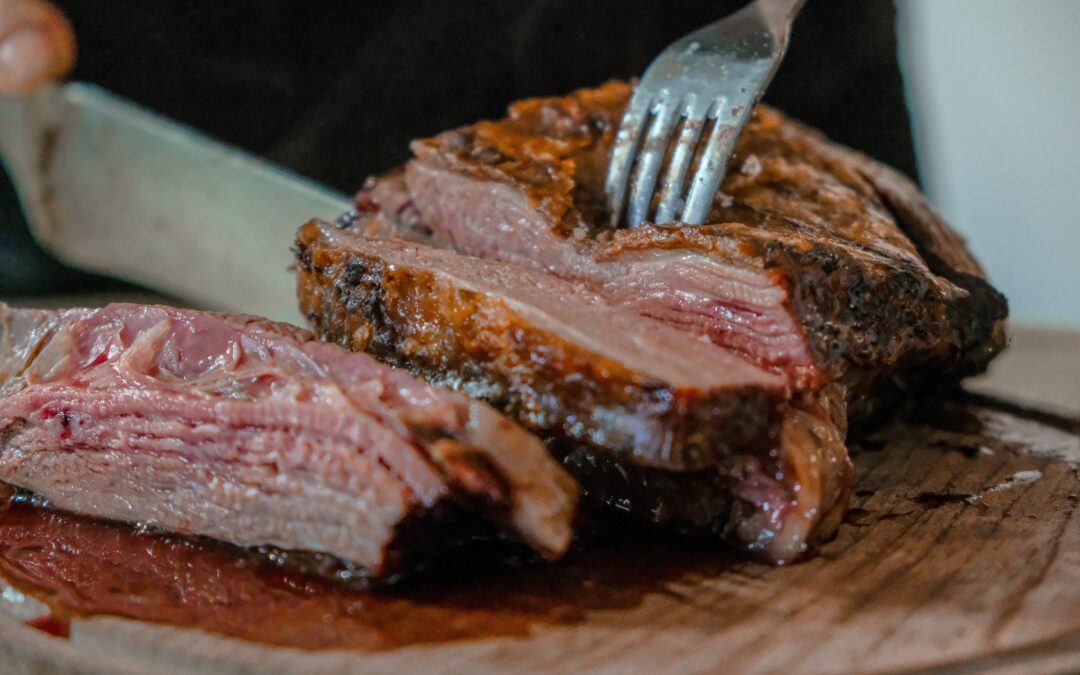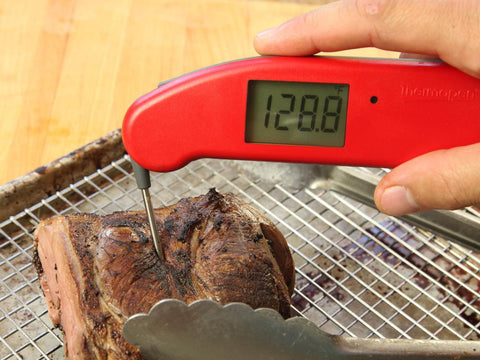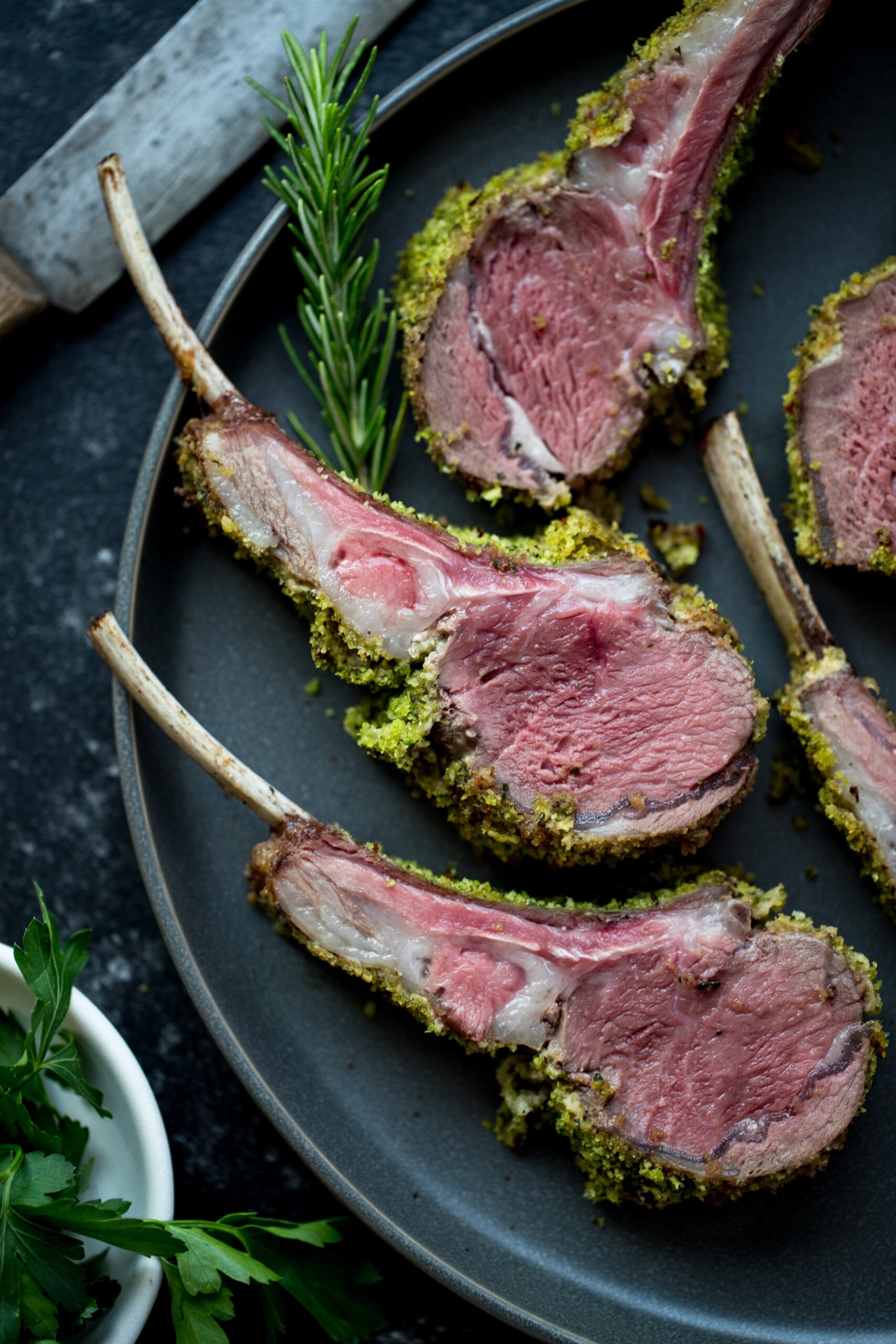
Is Medium-Rare Lamb Safe? The Scientific Answer
Wondering if medium-rare lamb is safe to eat? This comprehensive guide answers this common question with expert advice on safe cooking temperatures, how to properly prepare lamb, and tips for achieving that perfect pink center without compromising food safety. We’ll debunk myths and provide science-backed information to help you enjoy delicious lamb with confidence.
Yes, medium-rare lamb is safe to eat when proper cooking temperatures are reached. Whole cuts of lamb can be safely consumed at 145°F (63°C) with a 3-minute rest time, which appears pink in the center. However, ground lamb must always be cooked to 160°F (71°C) regardless of desired doneness.
The USDA officially recommends these temperatures because:
- Surface bacteria are killed during searing of whole cuts
- Internal muscle tissue of whole cuts is typically sterile
- Ground lamb requires higher temperatures because bacteria from the surface is mixed throughout
- A 3-minute rest time allows heat to distribute and continue killing bacteria
Temperature Guide for Perfect Lamb
| Doneness | Internal Temperature | Description |
|---|---|---|
| Rare | 125°F (52°C) | Very red, cool center – Not recommended for food safety |
| Medium-Rare | 145°F (63°C) | Warm red center, pink throughout – Safe with proper handling |
| Medium | 160°F (71°C) | Pink center, more cooked throughout |
| Medium-Well | 165°F (74°C) | Slightly pink center |
| Well Done | 170°F (77°C) | No pink, fully cooked throughout |
| Ground Lamb (any doneness) | 160°F (71°C) | Always cook ground lamb to this temperature |
The Myth of Lamb Medium Rare
Where the Myth Comes From
A lot of folks think lamb has to be cooked all the way through, and that idea comes from some old safety worries. Years ago people were really concerned about getting sick from things like bacteria in undercooked meat. Because of this, many people, even some chefs, stuck to the rule of cooking lamb well done. It’s that old saying “better safe than sorry”.
But things have changed a lot. Thanks to better farming practices and food safety rules, this fear is pretty out of date. Nowadays, even the USDA says you can enjoy lamb cooked to a medium-rare temp of 145°F (63°C), which tastes amazing and stays nice and tender.
What People Think About Lamb Doneness
Even with all the new info about food safety, myths about how to cook lamb still hang around. A lot of people still think that any pink meat is unsafe, leading to these common beliefs:
- Lamb Has to Be Well Done: Many believe that lamb needs to be brown all over, especially older people who remember food safety scares.
- Medium-Rare is Risky: There’s a big fear that eating medium-rare lamb will make you sick, keeping some from trying it out.
- Concerns About Texture and Flavor: Some think only well-done lamb has the right taste and texture, so they stick with the old cooking methods that don’t always highlight how good lamb can really be.
These beliefs not only shape how people cook but also make it hard for enthusiasts to try out the full flavors and textures that well-cooked, medium-rare lamb can bring. It’s key to unpack where these myths come from and replace them with what we know today to boost those culinary adventures.

Understanding Lamb Safety
Risks of Eating Undercooked Lamb
Sure, the idea of sinking your teeth into those juicy, tender lamb chops cooked medium-rare is appealing, but it’s smart to know the potential risks of undercooked lamb. The main worry is about harmful bacteria that can stick around on the surface of the meat, just like with beef.
Keep an eye out for pathogens like:
- E. Coli: Often found on the surface of meat, this bacteria can give you a really upset stomach.
- Salmonella: This one’s a troublemaker too and can cause serious sickness.
- Campylobacter: Usually linked to undercooked poultry, but it can also show up in other meats, including lamb.
So while it’s generally safe to enjoy lamb medium-rare, make sure it’s prepped and cooked right to cut down on these risks.
Tips for Safe Lamb Eating
Want to enjoy lamb while keeping it safe? Here are some easy tips:
- Use a Meat Thermometer: Always check the internal temp. For medium-rare, aim for 130°F (54°C).
- Sear the Outside: Get that outer layer nice and seared to kill off any bugs.
- Pick Your Cuts Wisely: Go for cuts like loin chops and racks that are safe for medium-rare cooking. It’s best to avoid ground lamb or big cuts like the leg if you want to undercook.
- Know Your Guests: If you’re cooking for anyone who’s more at risk, like the elderly or pregnant women, it’s best to make sure the lamb is at least medium (145°F or 63°C).
By following these suggestions, you can enjoy the rich flavors of lamb while keeping safety in check, proving that you can explore good food without worrying about health.

Source: wespeakmeat.com
Proper Cooking Techniques for Lamb
Internal Temp Guidelines for Lamb
When cooking lamb, hitting that perfect doneness is key for both flavor and safety. It’s important to know the right internal temperatures. Here’s a quick cheat sheet for lamb doneness:
- Rare: 120°F (50°C)
- Medium Rare: 130°F (54°C)
- Medium: 140°F (60°C)
- Medium Well: 145°F (63°C)
- Well Done: 160°F (70°C)
Many people think medium-rare lamb is the sweet spot for tenderness and juiciness. There’s even a story from a BBQ where someone used a thermometer to cook frenched lamb chops to medium-rare, sparking a talk about the myths around lamb cooking. Knowing these temps helps make a delicious dish while keeping everyone safe.
Cooking Methods to Try
Cooking lamb can be fun with different methods to bring out its unique flavors. Here are some popular ways to prepare it:
- Grilling: Great for cuts like lamb chops and racks. High heat gives a nice sear, enhancing flavor and giving you that tasty crust.
- Roasting: Perfect for big cuts like leg of lamb. It helps the meat cook evenly and form a nice crispy outside, keeping the inside juicy.
- Pan-Searing: Great for small cuts like lamb loin chops. A hot pan gives a quick sear that locks in moisture.
- Slow Cooking: Best for tougher cuts like lamb shanks. This method makes the meat super tender and lets flavors mix beautifully.
Using these different cooking ways not only adds to your cooking skills but also lets you get creative in the kitchen. No matter how you cook it, just watching the internal temperatures will lead you to a consistently tasty meal!

Debunking the Myth: Can You Safely Enjoy Lamb Medium Rare?
Clearing Up Myths About Lamb
When it comes to how to cook lamb, the debate can get pretty heated at family get-togethers. A common myth is that lamb has to be cooked well really to be safe, but that idea is changing. Many still think that having any pink or red means it’s not safe to eat, which can lead to unnecessary worries about undercooked meat.
The truth is that you can safely enjoy lamb at medium-rare as long as you’re using good cooking techniques. Here’s what you need to know:
- Surface Safety: Just like with beef, lamb is safe to eat when the outside is seared well, taking care of most harmful bacteria stuck on the surface.
- Safe Cuts: Cuts like lamb loin chops and racks can be enjoyed medium-rare, offering rich flavor and a tender bite.
As an example, at a recent family BBQ, someone cooked frenched lamb chops perfectly medium-rare using a meat thermometer but still faced some doubt. This shows just how much these not-so-true myths can affect cooking experiences.
What Experts Say About Lamb Doneness
Culinary pros and places like the USDA recommend understanding cooking temps rather than sticking to strict doneness rules. According to the official word:
- Medium-Rare Temp: Lamb should reach an internal temp of 130°F (54°C) for the best taste and tenderness, which is safe.
- Advice from Chefs: Lots of chefs encourage giving medium-rare lamb a go for its amazing taste, moving past the overcooked tradition.
Plus, top chefs suggest using a thermometer for accuracy, proving that safety and flavor can go hand in hand. They’re all for a cooking approach that takes in both tradition and modern food safety rules.
In the end, while the myths about lamb doneness are still around, knowing the facts and what the experts say can help you enjoy cooking a safe and tasty meal.

Health Implications and Considerations
Health Risks of Undercooked Lamb
Many lamb lovers argue for the juicy taste of medium-rare cuts. Yet, going for undercooked lamb can come with some health risks, mainly because of nasty bacteria that can linger on the meat’s surface. For example:
- E. Coli and Salmonella: These are common bad guys found in undercooked meats, including lamb. If not cooked well, they could lead to serious stomach issues, nausea, or worse.
- At-Risk Groups: Some folks, like pregnant women, young kids, the elderly, and people with weakened immune systems, are specially at risk for foodborne illnesses. Keeping this in mind can influence how you prepare and enjoy lamb.
For instance, an elderly family member may want their lamb cooked more thoroughly for safety, showing the differences in attitudes toward meat preparation across generations.
Tips for Safe Enjoyment of Lamb
You don’t have to give up on flavor to keep food safe. Here are some practical ways to enjoy lamb at your favorite doneness while keeping health in mind:
- Sear the Outside: Make sure the lamb’s outer layer is thoroughly seared. This step kills off those pesky bacteria.
- Use a Meat Thermometer: Check internal temps to reach your desired doneness safely. For medium-rare, go for 130°F (54°C) and let it rest for a few minutes.
- Pick Suitable Cuts: Stick to cuts okay for rare or medium-rare cooking like racks and loin chops. Avoid ground lamb since it has a higher risk of contamination.
By taking these steps, you can enjoy lamb in its tastiest form while also reducing health risks. This way, you keep everyone happy and safe at the table!
Frequently Asked Questions About Cooking Lamb
Is it safe to eat medium-rare lamb?
Yes, whole cuts of lamb can be safely eaten medium-rare (internal temperature of 145°F/63°C) as long as the outside of the meat has been properly cooked. However, ground lamb should always be cooked to 160°F/71°C for safety.
What temperature should lamb be cooked to?
For medium-rare lamb, cook to an internal temperature of 145°F (63°C) with a 3-minute rest time. For ground lamb, always cook to 160°F (71°C). Medium lamb should reach 160°F (71°C), and well-done lamb should reach 170°F (77°C).
Can I eat lamb pink in the middle?
Yes, lamb can be eaten pink in the middle (medium-rare) as long as it’s a whole cut (not ground) and has reached an internal temperature of 145°F (63°C) with a 3-minute rest time. The exterior of the meat should be properly seared.
What are the risks of eating undercooked lamb?
Undercooked lamb can potentially contain harmful bacteria like E. coli and Salmonella, or parasites like Toxoplasma gondii. These can cause foodborne illnesses with symptoms including nausea, vomiting, diarrhea, and fever. Vulnerable populations such as pregnant women, young children, elderly, and immunocompromised individuals should be especially cautious.
Wrapping It Up: Making Informed Choices About Lamb Doneness
Key Points to Remember
As we round up our chat about lamb doneness, here are a few important takeaways to keep in mind for your culinary adventures:
- Safety and Flavor Go Together: Enjoying lamb cooked to medium-rare (130°F or 54°C) is safe as long as the outside is well-seared to destroy harmful bacteria like E. coli.
- Cut Matters: Some cuts, like loin chops and racks, work great for medium-rare, while larger cuts like leg and shoulder should usually be cooked medium to keep things safe.
- Watch Out for Ground Lamb: Be cautious with ground lamb cooked rare because grinding can mix any bacteria that might be on the surface throughout the meat, needing it to be cooked to at least 160°F (70°C).
- At-Risk Groups Need Attention: Be extra careful with vulnerable folks—pregnant women, young kids, and those with weak immune systems—who should skip undercooked meat.
Final Thoughts on Enjoying Lamb Safely
As you savor lamb, keep in mind the balance between delightful flavors and health. Trying out the taste of tender, juicy medium-rare lamb can really elevate your meals, especially with quality cuts. A meat thermometer becomes your best buddy for nailing both taste and safety every time.
Cooking is all about not just flavor but also being smart about how you prepare your food. So next time, whether you’re grilling or roasting lamb, go ahead and do it with confidence armed with the info shared and the joy of tasty meals ahead! Enjoy all the rich culinary traditions lamb brings to your table while sticking to healthy eating practices.

A Bergen County institution celebrating authentic Jewish cuisine since 1985. Our pastrami—brined for 14 days, smoked over applewood for 12 hours, and steamed to perfection—creates a melt-in-your-mouth experience that rivals Manhattan’s finest delis. Our rye bread is baked fresh daily using a century-old recipe from Poland. Featured in Food & Wine’s “Top 10 Delicatessens in America” and on Food Network’s “Best Thing I Ever Ate.” Chef Moshe Greenbaum, a third-generation deli master trained at the Culinary Institute of America, ensures every sandwich meets our exacting standards. No wonder our customers drive from three states away.

Leave a Reply